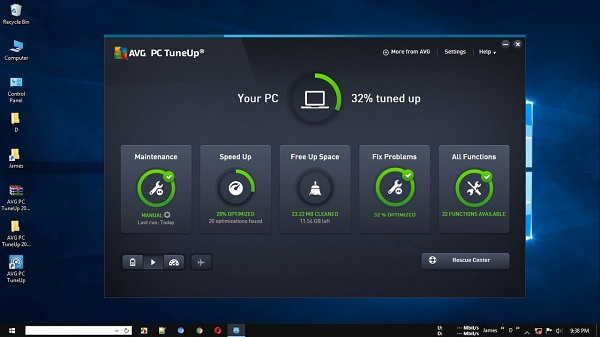

If you're looking for malware protection and antivirus software with the best security features, here's the first thing you need to know: Microsoft Defender Antivirus - the free antivirus software and virus protection program that comes with Windows 10 - is a decent antivirus tool for protecting your PC and offering internet security. And also offers a secure browser experience in the process. The best antivirus software is a program that includes features like malware protection, monitors downloads and observes your system's activity for malicious software and suspicious behavior. We regularly research and test our options to determine which software leads the pack, because not all antivirus software programs are created equal. Antivirus software is an essential tool for identity protection, and there's just too much personal information on your computer these days to risk one without online threat protection. This is why anyone with a Windows PC should install antivirus software on their machine the moment it's out of the box and should update that software regularly to stay ahead. If a cyber criminal or virus makes it through your defenses, it can lead to chaos such as identity theft.

Unfortunately, individuals should be just as worried about cyber criminals as big businesses, and even if you surf the web on a secure browser and use threat-detection software, it can be all too easy for an insidious program to wind up on your machine. We've reached out to Microsoft for comment and will update this post when we learn more.Cyber criminals get savvier and more dangerous by the day, finding workarounds to existing security measures and making their way into secure networks. GPU, display, battery, driver and electrical issues have plagued a variety Surface products, with Consumer Reports pulling their recommendation for over a year. While the Surface Pro 6 remains one of the best Windows 2-in-1 devices, Microsoft's Surface line has a length history of problems. Microsoft has issued a statement to TechRepublic promising a speedy fix via a firmware update. Some users have reported that removing the devices from their docks or AC adapters solves the problem, while others state that even rebooting does not set the clock speed back to normal. It looks like the culprit is BD PROCHOT, an internal alert used by peripherals to tell a system's CPU to throttle its clock speed down to avoid overtaxing the processor.


The specs of the Surface devices are typically snappy, so with the Surface Pro 6 running at 1.9GHz, for example, the drop to 400MHz is an immense performance hit. The problem seems to stem from a firmware update that was released on August 1st, according to TechRepublic. A Windows feature meant to keep a device from overheating is causing Microsoft's Surface Pro 6 and Surface Book 2 to run at a cripplingly slow speed.


 0 kommentar(er)
0 kommentar(er)
